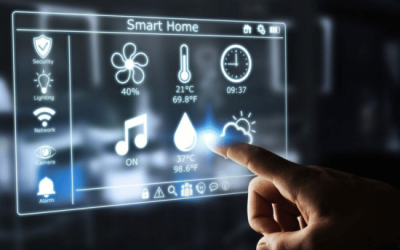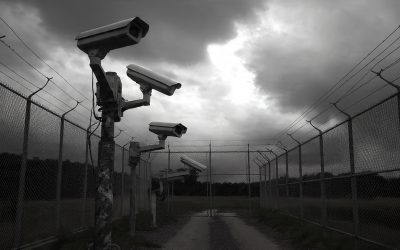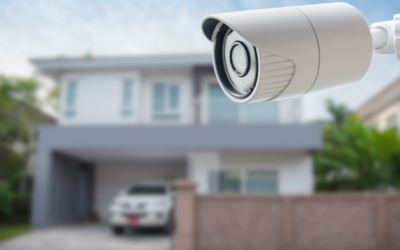How Access Control Integrates Seamlessly
In today’s rapidly evolving security landscape, the integration of access control and alarm monitoring systems has become paramount. As businesses and residential properties face increasing threats, the need for a cohesive security strategy is more critical than ever. Access control systems regulate who can enter specific areas, while alarm monitoring systems provide alerts in the event of unauthorized access or other emergencies.
When these two systems work in tandem, they create a robust security framework that not only deters potential intruders but also ensures a swift response to incidents. The integration of these systems allows for a more comprehensive approach to security management. By combining access control with alarm monitoring, organizations can streamline their security protocols, reduce response times, and enhance overall safety.
This synergy not only protects physical assets but also fosters a sense of security among employees and residents. As threats continue to evolve, the importance of such integrated systems cannot be overstated; they represent a proactive stance against potential risks. Peace of mind is our priority.
Understanding Access Control and Alarm Monitoring Systems
Access control systems are designed to manage and restrict entry to specific areas within a facility. These systems can range from simple keycard access to sophisticated biometric scanners that utilize fingerprints or facial recognition technology. The primary goal of access control is to ensure that only authorized individuals can enter sensitive areas, thereby minimizing the risk of theft, vandalism, or other security breaches.
On the other hand, alarm monitoring systems serve as the first line of defense against unauthorized access and other emergencies. These systems are equipped with sensors that detect intrusions, fire, or environmental hazards, triggering alerts that notify security personnel or law enforcement. Alarm monitoring can be done on-site or remotely, providing flexibility and peace of mind to property owners.
Together, these systems form a comprehensive security solution that addresses both prevention and response.
How Access Control Enhances Alarm Monitoring
Access control systems significantly enhance alarm monitoring by providing context to alerts and notifications. For instance, when an alarm is triggered, the access control system can provide real-time data about who was granted entry to the area at the time of the incident. This information is invaluable for security personnel as it allows them to assess whether the alarm was triggered by an authorized individual or an intruder.
Moreover, access control systems can be programmed to automatically lock down certain areas in response to an alarm event. This feature not only prevents unauthorized access during a security breach but also helps contain potential threats. By integrating access control with alarm monitoring, organizations can create a layered security approach that enhances situational awareness and improves overall response effectiveness.
How Alarm Monitoring Enhances Access Control
Alarm monitoring systems complement access control by providing an additional layer of security that can detect breaches in real-time. When an unauthorized entry is attempted, the alarm monitoring system can immediately alert security personnel, allowing for a rapid response. This capability is particularly crucial in high-risk environments where every second counts.
Furthermore, alarm monitoring can trigger specific actions within the access control system. For example, if an alarm is activated due to a forced entry attempt, the system can automatically lock down all access points to prevent further intrusion. This integration not only enhances the effectiveness of access control measures but also ensures that security personnel are equipped with timely information to make informed decisions during emergencies.
The Benefits of Unified Response through Integration
The integration of access control and alarm monitoring systems facilitates a unified response to security incidents. When both systems are connected, they can share information seamlessly, allowing security teams to respond more effectively to threats. This unified approach minimizes confusion and ensures that all personnel are on the same page during an emergency.
Additionally, a unified response can lead to improved resource allocation. Security teams can prioritize their actions based on real-time data from both systems, ensuring that they focus on the most critical areas first. This efficiency not only enhances overall security but also reduces the likelihood of costly mistakes during high-pressure situations.
Real-Time Monitoring and Response Capabilities

One of the most significant advantages of integrating access control and alarm monitoring systems is the ability to monitor events in real-time. Security personnel can receive instant notifications when an alarm is triggered or when unauthorized access is attempted. This immediacy allows for swift action, whether it involves contacting law enforcement or investigating the situation on-site.
Real-time monitoring also enables organizations to maintain a continuous watch over their premises. With remote access capabilities, security teams can monitor events from anywhere, ensuring that they are always aware of potential threats. This level of vigilance is essential in today’s fast-paced world, where security incidents can occur at any moment.
Seamless Integration for Enhanced Security
Seamless integration between access control and alarm monitoring systems is crucial for maximizing security effectiveness. When these systems are designed to work together harmoniously, they create a cohesive security environment that enhances overall protection. This integration allows for centralized management, where security personnel can monitor all aspects of their security infrastructure from a single interface.
Moreover, seamless integration reduces the complexity often associated with managing multiple standalone systems. By consolidating functions into one platform, organizations can streamline their operations and reduce the likelihood of errors or oversights. This efficiency not only saves time but also enhances the overall effectiveness of security measures.
Streamlining Operations with Integrated Systems
Integrated access control and alarm monitoring systems streamline operations by automating various security processes. For instance, when an employee swipes their access card at a secure entry point, the system can automatically log this event while simultaneously monitoring for any unusual activity in the vicinity. This automation reduces the burden on security personnel and allows them to focus on more critical tasks.
Additionally, integrated systems can facilitate better communication among team members during emergencies. With real-time data sharing and alerts, all personnel involved in security operations can stay informed about ongoing incidents and coordinate their responses effectively. This streamlined approach not only enhances operational efficiency but also fosters a culture of collaboration within security teams.
Leveraging Data for Improved Decision Making

The integration of access control and alarm monitoring systems generates valuable data that organizations can leverage for improved decision-making. By analyzing trends and patterns in access events and alarm triggers, security teams can identify vulnerabilities and make informed adjustments to their security protocols. For example, if data reveals that certain areas experience frequent unauthorized access attempts, organizations can enhance their security measures in those locations.
Additionally, historical data can inform future investments in technology or personnel training, ensuring that resources are allocated effectively to address emerging threats.
Enhancing Emergency Response with Unified Systems
Unified access control and alarm monitoring systems significantly enhance emergency response capabilities. In the event of a crisis, such as a fire or active shooter situation, having integrated systems allows for rapid communication and coordination among first responders and security personnel. The ability to share real-time information about the situation on-site can be critical in ensuring a swift and effective response.
Furthermore, integrated systems can provide first responders with essential information about building layouts and access points before they arrive on the scene. This knowledge enables them to navigate the premises more efficiently and address threats more effectively, ultimately saving lives and minimizing damage.
The Future of Integrated Access Control and Alarm Monitoring Systems
As technology continues to advance, the future of integrated access control and alarm monitoring systems looks promising. Innovations such as artificial intelligence (AI) and machine learning are poised to revolutionize how these systems operate. For instance, AI algorithms could analyze vast amounts of data from both systems to identify potential threats before they escalate into serious incidents.
Moreover, as smart building technologies become more prevalent, integrated systems will likely evolve to include additional features such as environmental monitoring and energy management. This convergence will create even more opportunities for enhancing security while optimizing operational efficiency. In conclusion, the integration of access control and alarm monitoring systems represents a significant advancement in modern security practices.
By combining these two essential components into a unified framework, organizations can enhance their overall safety measures while streamlining operations and improving decision-making capabilities. As we look toward the future, it is clear that integrated systems will play a pivotal role in shaping the landscape of security management for years to come.
In exploring the integration of access control with alarm monitoring for a unified response, it’s beneficial to consider how back-to-base alarm monitoring enhances overall security measures. For a deeper understanding of this topic, you can read the article on how back-to-base alarm monitoring enhances your home and business security. This article provides insights into the effectiveness of alarm systems and their role in creating a comprehensive security strategy.
FAQs
What is access control in security systems?
Access control is a security measure that regulates who or what can view or use resources in a computing environment or physical space. It involves the use of credentials such as key cards, biometric scans, or PIN codes to grant or restrict entry to buildings, rooms, or specific areas.
What does alarm monitoring entail?
Alarm monitoring refers to the process of continuously observing security alarms and sensors to detect unauthorized access, emergencies, or other security breaches. When an alarm is triggered, monitoring centers respond by notifying property owners, security personnel, or emergency services.
How do access control and alarm monitoring work together?
Access control systems can be integrated with alarm monitoring to provide real-time alerts when unauthorized access attempts occur. This integration allows for immediate response to security breaches by combining entry data with alarm signals, enhancing overall security management.
What are the benefits of integrating access control with alarm monitoring?
Integrating these systems offers a unified security response, improved situational awareness, faster incident response times, and centralized management. It helps in reducing false alarms and provides detailed logs for investigations.
Can integrated systems be customized for different security needs?
Yes, integrated access control and alarm monitoring systems can be tailored to meet specific security requirements, such as setting different access levels, defining alarm triggers, and configuring response protocols based on the type of facility or threat level.
Is integration of access control and alarm monitoring suitable for all types of facilities?
Integration is beneficial for a wide range of facilities including commercial buildings, educational institutions, healthcare facilities, and industrial sites. However, the complexity and scale of integration may vary depending on the facility’s size and security needs.
What technologies are commonly used to integrate access control with alarm monitoring?
Common technologies include IP-based communication, software platforms that unify control panels, cloud-based management systems, and protocols that allow different security devices to communicate seamlessly.
Does integrating access control with alarm monitoring improve emergency response?
Yes, integration enhances emergency response by providing security personnel and first responders with accurate, real-time information about access points and alarm events, enabling quicker and more effective action.
Are there any challenges in integrating access control with alarm monitoring?
Challenges may include compatibility issues between different systems, the need for specialized technical expertise, initial setup costs, and ensuring cybersecurity measures are in place to protect integrated systems.
How does integration affect data management and reporting?
Integration allows for centralized data collection, making it easier to generate comprehensive reports, analyze security incidents, and maintain audit trails, which supports compliance and improves overall security oversight.










